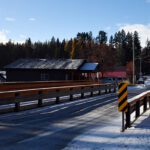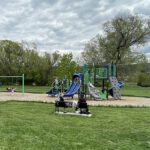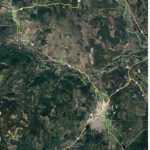Home »

Council green lights boundary expansion process
City of Cranbrook council last night (Oct. 28) unanimously approved a municipal boundary extension proposal for 18.6 ha (46 acres) and 18 parcels of land along 17th St South, in the south of the city.

The approval authorizes city staff to develop, sign, and submit a proposal to the Ministry of Municipal Affairs and Housing.
A request has been made by the owners of Lot 5, District Lot 3911, Kootenay District Plan 6277 for a municipal boundary extension to include their two hectare (five acre) property into the City of Cranbrook.
According to the city Office of Innovation and Collaboration report to council, “the proposal would include an extension of the city’s boundary to incorporate a block of land, including the requested property, which are contiguous with the existing city boundary. The block includes approximately 18 parcels totalling 18.67 ha (46 acres) comprised of nine – 5+/- acre parcels and a cul-de-sac of nine – 0.5+/- acres residential lots. As it’s generally a requirement to also assume responsibility of the fronting roads, the proposal also includes 1.2 km of rural roads the city would be responsible for.”
The city report outlined an analysis with respect to the proposal in relation to the city official community plan policy:
- There is a significant land base within the city limits which has potential for development however many factors affect their potential development. A cursory review by staff in 2016 found that the existing land base (not taking into account other factors) within the city limits has the capacity to support approximately 5,000+ dwelling units (includes Wildstone and River’s Crossing). Factors affecting development include availability of services, development costs, willingness of owners, market conditions, etc.
- The current proposal would facilitate subdivision of the applicants’ property; however, no proposals or development intentions have been expressed by the remaining landowners to date. Through consultation more information may become available.
- The proposal expansion area does have the potential for municipal services; however, it is not known whether landowners would be willing to pay for services should the properties be incorporated. If not, the potential for requests for the city to install services at the city’s expense exists.
- All properties would be served by a public road which would become the responsibility of the city.
- Potential impacts to city operations includes 18 new properties which will require garbage pick-up and snow removal and capital costs for road maintenance for the newly acquired roads. Potential also exists for the costs of servicing the parcels in the future be borne by the city similar to the Pinecrest subdivision. The properties currently have fire service coverage
- Should council wish to proceed and the expansion approved by the province, there is potential for new single family lots to be developed; however, until consultation is complete no additional development plans are known at this time.
- Financial implications to city resulting from the expansion would be that the newly incorporated lots would be paying City of Cranbrook tax rates. Initial review in 2016 indicated that the taxes would significantly increase including almost double for some of the properties. This could be a detriment to gaining support from the landowners in the expansion area.
- Larger, contiguous blocks adjacent to existing city boundary is consistent with technical guidelines of the province. The proposed area is adjacent to existing city boundaries.
In addition to the public consultation work that was done in 2016, the city will have to re-consult with the original landowners and the newly added property owners via mail and an open house. The city is also required to conduct intergovernmental consultation (Regional District of East Kootenay, First Nations, MOTI) and have their comments included before the city can submit a package to the provincial ministry for initial consideration, the city report stated.
Coun. Norma Blissett questioned why the larger area is being considered (two ha for the applicant but 18.6 ha total in the proposal)?
City planner Rob Veg said the issue “has been going on for a while. In order to meet the technical standard of the province, you need to try and make the boundary contiguous, so if we to just look at a single property it would likely not pass the muster because we’re creating an island, which they (province) don’t usually consider unless you are developing… think of the mines or the airport… or alternatively if we do a single property, ie. the people who have expressed interest, we have to take 17th Avenue as well, being as it is the fronting road to make the boundary contiguous. In which case then we leave all the parcels on that cul de sac, they would be outside the city boundary but the likelihood is the province would make us take that road over, which means now the city is on the hook for maintaining and paving that road for people who aren’t in the city boundary.
“In addition, the provincial guidelines prefer to have larger tracts of land and over the years they have indicated to the city that the five-acre one-offs are not ideal anymore. It’s policy and our OCP also support larger tracts of land.”
Mayor Lee Pratt further explained the property owner (Lot 5) wishes to subdivide “and if he comes into the city he can produce more lots. If he stays in the regional district, he’s going to get about half the lots.”
Coun. Ron Popoff asked, “what would be the expectation of residents to make the financial cost to hook up to city water and sewer?”
Veg replied, “There is no requirement for us to make them connect to the city water.”
He said two things could happen. First, the city could “front the bill” and pay for the services or it could look at the creation of a local service area.
“If it is successful and they come in it could be just like the northern area where they remain as is – wells and septic – but through experience, it tells us that only lasts so long and over time people will come to expect servicing at some point.”
e-KNOW







